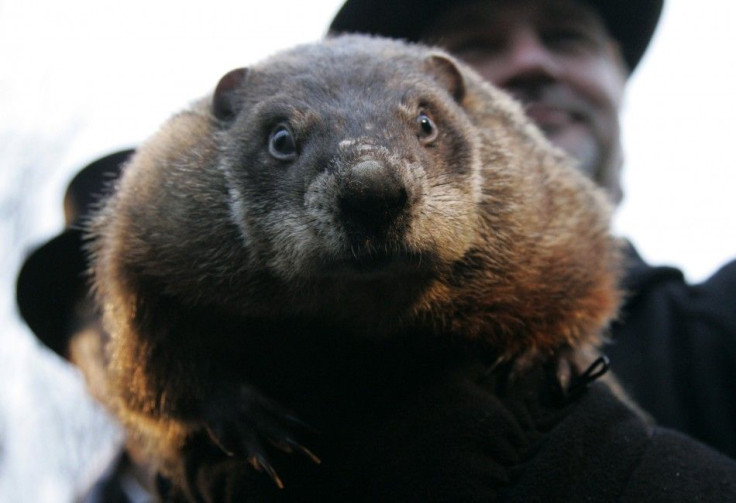Punxsutawney Phil’s Hometown And Its History Of Groundhog Day Meteorology

Punxsutawney Phil is, without a doubt, the world’s most famous rodent meteorologist. He works a grand total of one day each year, and the three pillars of his job are simple: Look cute, let a member of the Inner Circle hold him, and act out one of the nation’s most absurd rituals in front of an adoring audience in Punxsutawney, Pa.
Punxsutawney, which is a Native American word for the area’s pesky “sand flies,” may be one of the hardest names to spell on the U.S. map, and it’s even harder to find. But the town’s history of groundhog prognostication is easy to trace.
Originally a Native American campsite halfway between the Allegheny and Susquehanna rivers, the Western Pennsylvania town is located on the earliest known trail to the east, the Shamokin Path. It’s nestled in the gently rolling hills of the Appalachian Plateau in an area occupied at various times throughout history by the Shawnee, Delaware, Seneca and Iroquois.
The first white settlers arrived in the late 18th century, and there are now 6,200 of them living alongside the town’s most famous family: Phil, his wife and their children. Groundhogs took on a great importance in Punxsutawney in 1887 when members of the Punxsutawney Groundhog Club held their first public celebration of Groundhog Day.
The tradition of celebrating such an event can be traced back to early Christians in Europe, when a hedgehog was said to look for his shadow on Candlemas Day. According to an old English rhyme: "If Candlemas Day be fair and bright, winter will have another flight. But if it be dark with clouds and rain, winter is gone and will not come again."
The Groundhog Day phenomenon in the U.S. has grown exponentially since that first gathering in 1887. The first front-page newspaper article appeared in 1908, first dance in 1911, first film footage in 1916, first logo in 1924 and first Groundhog Queen in 1940. Phil (one of the current guy’s ancestors) made his television debut in 1952 and became a staple on “Today” by 1959. Phil even met with Ronald Reagan at the White House in 1986 and became a Hollywood star along with Bill Murray in 1993. Thanks to the Web, Punxsutawney Phil is now a global sensation.
Thousands of celebrants make the trek to Gobbler’s Knob to hear the 20-inch, 15-pound groundhog make his Feb. 2 prediction each year. As legend would have it, if Phil sees his shadow when he “emerges” from his burrow around 7:25 a.m., Americans can expect six more weeks of winter weather. No shadow foretells an early spring.
The whole stunt is run by a group of bowtie-wearing, top-hat-sporting greybeards known as the Groundhog Club’s Inner Circle. Each has the honor of pampering Phil year-round and preparing him for his big day. They also help organize citywide events at attractions like the Punxsutawney Weather Discovery Center, the Theater Arts Guild, the Punxsutawney Country Club, Cloe Lake and the Mahoning Shadow Trail.
Many consider the earthly Groundhog Day a celestial holiday with roots in science, given that it takes place during the time in the Earth's orbit around the Sun when we move between the December solstice and the March equinox.
Whether the winter will continue or spring will come early is really anyone’s guess, because, while the Inner Circle keeps track of Phil's predictions (100 shadows in 116 years), it doesn’t have a record of which years he was right.
© Copyright IBTimes 2024. All rights reserved.












